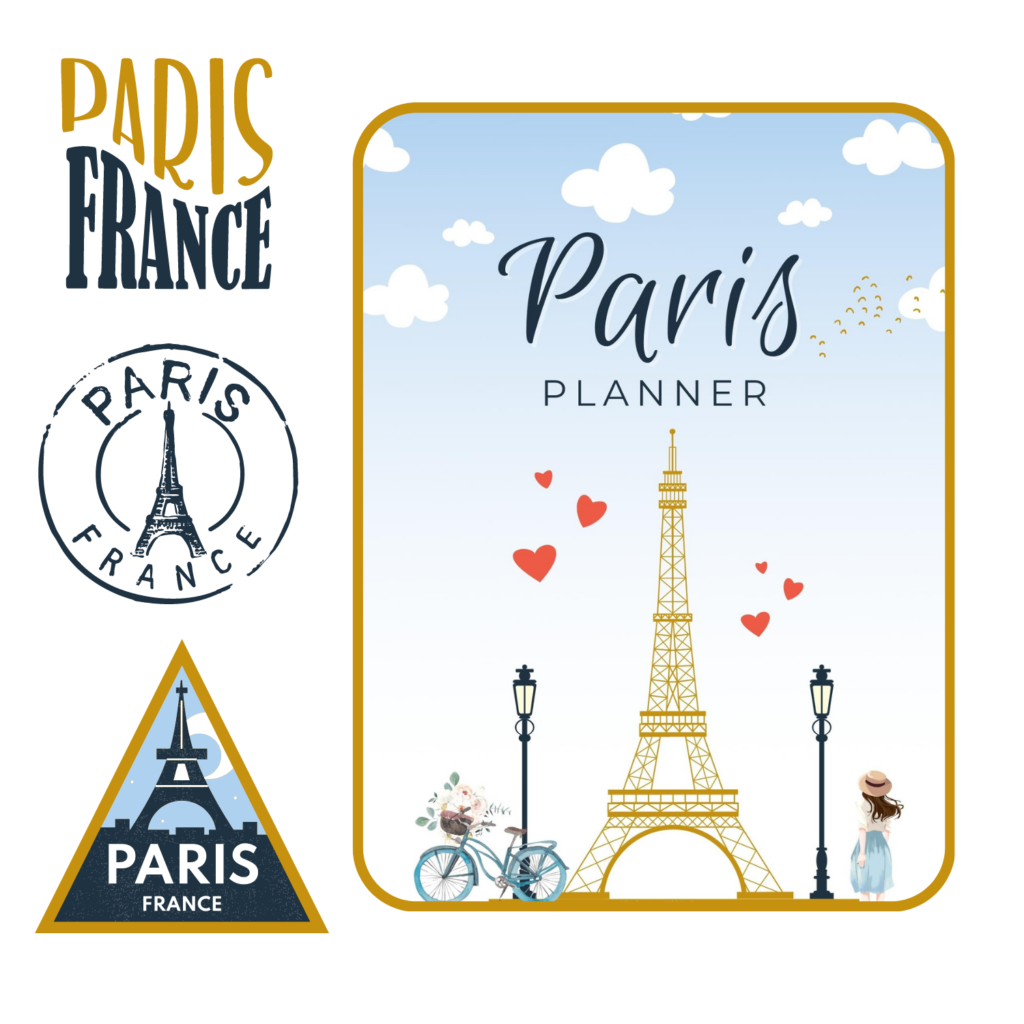Phrygian Cap: The Paris Olympics Mascot
With every passing month, enthusiasm is building for the upcoming Paris 2024 Olympic Games. Amongst all this excitement, France has finally revealed its mascot for the games, and it has taken everyone by surprise. It's a Phrygian cap

The Paris 2024 Olympic and Paralympic Mascot
This symbol of the past, along with added modern elements, is the mascot for the Paris 2024 Olympics.
Some posts on this site contain affiliate links, meaning if you book or buy something through one of these links, I may earn a small commission (at no extra cost to you!). Opinions are always my own and I’ll never promote something I don’t use or believe in. Also as an Amazon Associate I earn from qualifying purchases.
But what the heck is a Phrygian Cap?
A well-loved feature of the Olympics, mascots have come in many shapes and sizes. They bring a certain festivity to the events and also symbolize the concrete spirit of the games. Traditionally, the mascots have been either animals or creative inspirations of the host country. They represent the cultural heritage of the country and spread a cheery atmosphere to fans and athletes alike.
Like any good mascot, the motto for the Phryges is “Alone we go faster, but together we go further.”
Travel photography
Best Spots Eiffel Tower Photos Ebook
Are you looking for the best spots to take a stunning Eiffel Tower photo in Paris? Look no further! This ebook is designed to be your one-stop guide for taking those breathtaking Eiffel Tower shots throughout the city.
Who are the Phryges?
As the French prepare for the games, the two little mascots, known as the “Phryges”, personify liberty. These Phryges are based on a hat dating back to ancient times. These colorful red characters come from the Phrygian cap, a symbol of the French revolution. Featured on several Latin American flags, it is known as the Cap of Liberty and goes back to Roman times.
The Phrygian Cap
Initially, the Phrygian Cap was worn by a freed slave in Phrygia upon his release from slavery, and later on, it was quite heavily used in the iconography of the French revolution. The cap was an essential element of the Scythian uniform in the olden times, and when the Scythian power declined, Athens took in their police and their uniform. When the Romans conquered Greece, they brought the cap to Europe.
In the 18th century, the red cap began appearing in France. In 1790, it became a popular symbol of the French Revolution worn by the sans-culottes and was used to cover the head of the goddess of Liberty and Nation. Men and women who wanted to be citizens of a country rather than just subjects soon began wearing it in public.
In 1792, when the Palace of Tuileries (in the Tuileries Garden) was invaded by the general masses, King Louis XVI was forced to wear the red bonnet. After the fall of the monarchy, the red cap was seen everywhere, and in 1793, it was even compulsory to wear the Liberty Cap in the Paris Assemblies.

Get my FULL Paris Travel Planner with sheets for:
Trip Overview | Travel Budget | Accommodation Tracker | Transportation Tracker | Activities Planner | Pre-Trip Planning | Places to Visit | Itinerary Overview | Daily Itinerary | Arrondissement Guides | Road Trip Planning | Packing List | Outfit Planner | Expense Tracker | Souvenirs & Gifts List | To do List | January-December Planning Calendar | Paris Bucket List Checklist | and Travel Journal Pages
100 pages! Available for $9.99.
The most well-known representation of the Liberty Cap is in the painting by Eugene Delacroix, La Liberte guidant le peuple (Liberty Leading the People). Inspired by the insurrection of 1830 when France Charles X, the last king of France was forced to step down, the painting shows a street barricade with a woman wearing the Liberty Cap in the foreground holding the French tricolor flag.

[If you visit Paris, you can see this painting yourself in the Louvre on the first floor in the Denon wing. Remember, they are limiting the number of visitors in the Louvre, so buy your tickets ahead of time.]
Marianne, the allegorical figure of the French Republic whose carved bust statue is found in all town halls, is also seen wearing the Phrygian Cap with a tricolor cockade embroidered on it.
Would it surprise you that Americans use the Phrygian cap as well?
Yep. It's true! You only have to look at the seal of the United States Senate to confirm. It is also in the state seal of New Jersey, New York, Iowa, Idaho, West Virginia, and my own current home state of North Carolina.

What is the Pronunciation of Phrygian?
Very important if you are traveling to the city of light for the games, Paris will be full of these bonnet rouge and you need to know the Pronunciation of Phrygian! Especially if you have plans to buy one as a souvenir!
Phoenitcally, Phrygian is: FRI · jee · uhn
and Phryges is: FRI · jee · uhs
Why the Phryges?
The Phryges have been around for decades, from the construction of Notre Dame of Paris in 1163 to the Revolution and the building of the Eiffel Tower. As a symbol of liberty and freedom, the Phryges lead the movement, celebrate athletes in all arenas, and promote the values of the sport. Even if it is more like revolution through sport!

Unlike previous ones, the 2024 Paris Olympics mascots have very little difference between the Olympics and the Paralympics. The Olympic Phryge has a regular leg whereas the Paralympic Phryge wears a racing blade; the intentional choice is aimed at promoting inclusion. The Olympic phryge and paralympic phryge are basically the same.
How about you? Had you ever heard of Phrygian cap before? What do you think about it now?
AUTHOR BIO
Andi Fisher
I am married to a French man, lived in France for 3 years, and have been to Paris more than 50 times. I am always a tourist so the information, tip, and tricks I share are created to help you!
Like it? Pin it!



Tips
- Flights
- Look for fares using sites like Skyscanner or Expedia.com.
- For France (Paris) coming from the West Coast, I typically fly Air France or United. From the East Coast, I typically fly Air France or Delta.
- If you travel frequently, consider investing in a Priority Pass for airport lounge access. Not only will you have a spot to relax before your flight and charge your devices, but you can eat and drink for free (without paying crazy airport prices!)
- Accommodation
- I use Expedia.com, Booking.com, and Hotels.com to find lodging. Always check the reviews on TripAdvisor before booking!
- If you want to stay in a rental, look at VRBO and Plum Guide.
- Transportation
- For rental car agencies, try Rentalcars.com. When traveling in Europe, I use AutoEurope to make reservations. They find the best rates and allow you to compare different car rental agencies. I typically book with Sixt.
- For transportation from the CDG airport to anywhere within Paris, consider pre-booking with Get Transfer. It is one way to be stress-free and you can request an English-speaking driver.
- Tours + Atractions
- I book tours with companies like Viator and GetYourGuide. Both have a wide variety of activities for every travel style. Other companies to look at include Tours by Locals and Withlocals.
- If you’re visiting a city with multiple attractions, be sure to check out a discount pass, such as CityPASS or Go City.
- Context Travel is another option and they offer more educational-based activities.
- If you are looking to buy tickets to attractions, check out Tiquet.
- Don't Forget Travel Photos
- One of my favorite things to do is to get photos taken of me while on vacation. Flytographer is a great option with photographers all over the world.
- Peace of Mind
- It’s important to have some type of travel insurance to cover any unforeseen accidents, illnesses, threats, or cancellations. I always travel with insurance and would recommend SafetyWing, SquareMouth or Travelex Insurance are good options.
- Should you have any trouble with flight delays to the extent you feel you deserve compensation, I encourage you to check out and use AirHelp. I used them and for 1 claim I got compensated (transparency: a 2nd claim did not, but I was still glad I tried!).
- Planning
- Check out Le Shop for my digital travel planners and Paris planner!



I hadn’t heard about this before. How interesting!
I love reading about history and this is a great story. Thanks for sharing.
This was an interesting read. I learned so much.
Thank you for sharing this information. The Olympics will be here before we know it and I can’t wait to watch it on TV.
This is a really great and interesting to know about. Thanks for sharing this with us
What a really wonderful and very informative post this is. I learned a lot by reading this article thanks for sharing
I am glad to find more about the Phrygian Cap. It’s beautiful to know its history too!
That was really insightful, I had no clue that’s was the story behind the Phrygian cap!
I have never heard of this cap before. I love the sentiment and what it stands for.
This is such a cute and very beautiful Phrygian cap! Plus the meaning it gives is for everyone’s betterment by acting together as one! Totally love it!
I love to learn about the history and how things began, Thanks for sharing this information about the Phrygian Cap
I haven’t heard of this. This is good to know thanks for sharing this with us.
I had no idea that the Phrygian/ Liberty Cap in the painting of Delacroix has deep symbolism and long history but I am happy to see that this is given a different light in the coming Paralympics. Also, it looks really cute. Kudos to those who designed it.